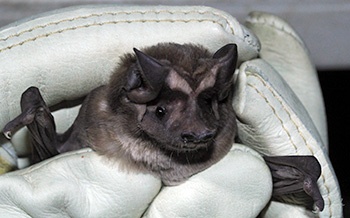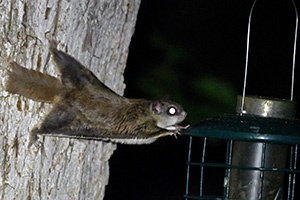Cavity Dwellers

Wildlife find dead wood extremely useful. One type of dead wood used by a host of different animal is called a snag.
Snags are standing dead trees that can be left in your landscape. If safety is a concern in leaving a tree standing, ask a tree surgeon to cut the snag to about 15 feet tall as this is still valuable to wildlife. It is still important to make sure that this will not be a risk to structures or property.
Birds, bats, small mammals, and even moths are some of the animals that may call a tree cavity home.
Year-round Birds
Woodpeckers like the pileated woodpecker, downy woodpecker, hairy woodpecker, red-bellied woodpecker, and the red-headed woodpecker (which is on the conservation watch list) all nest year-round in tree cavities.
Cavities are also home to smaller birds like Carolina chickadees, tufted titmouse, Eastern bluebird, and American kestrel. Even some ducks like wood ducks and black-bellied whistling ducks nest in tree cavities. And of course owls, like the Eastern screech-owl, call tree cavities home.
Bats

There are quite a few bat species that roost in tree cavities. The tricolored bat (Perimyotis subflavus) is Florida’s smallest bat; they roost singly or in small groups in caves, tree foliage, tree cavities, and occasionally human-made structures. The Southeastern myotis (Myotis austroriparius) roosts in colonies in caves, hollow trees, buildings, culverts, bridges, and bat houses. Rafinesque’s big-eared bats (Corynorhinus rafinesquii) roost in small colonies in hollow trees, tree cavities, and under loose tree bark, as well as in abandoned buildings in forests. Big brown bats (Eptesicus fuscus) roost in colonies in buildings and tree cavities. Evening bats (Nycticeius humeralis) are common throughout Florida. They roost in colonies in buildings, bridges, utility poles, bat houses, and hollow trees.
Other Florida bats that may roost in trees include Seminole bats (Lasiurus seminolus), northern yellow bats (Lasiurus intermedius), and hoary bats (Lasiurus cinereus). The Florida bonneted bat (Eumops floridanus) is endangered and its habits are not well understood, but it has been known to roost in tree cavities. All of these bats play an important ecological role as insectivores.
Other Small Mammals

Photo by Brian Henderson.
Southern flying squirrels are nocturnal mammals that are rarely seen by humans. These squirrels do not actually fly, but they do glide. Flying squirrels usually live in dead trees, especially if trees with nuts or acorns are nearby (they do sometimes nest in attics). They can be heard making excited-sounding cheeps during the first several hours after sunset. Flying squirrels eat a variety of plant matter and insects.
Raccoons are not terribly fussy about their living quarters and tree cavities are one of the many places they may choose to call home. Additionally, opossums are not commonly cavity dwellers, but they have been known to nest in cavities on occasion.
And More
You never know who you may find dwelling in a cavity. A new exciting discovery may be just around the corner, like when Andrei Sourakov, a lepidopterist with the Florida Museum of Natural History, made the unique discovery of communal roosting in a species of glossy black Idia moths.
If you have questions about a creature found in one of your trees, contact your county Extension office.
Also on Gardening Solutions
More from UF/IFAS
- Bats of Florida
- Helping Cavity Nesters in Florida
- Hollow Trees Host Massive Moth Slumber Parties–Florida Museum of Natural History
- Northern Raccoon
